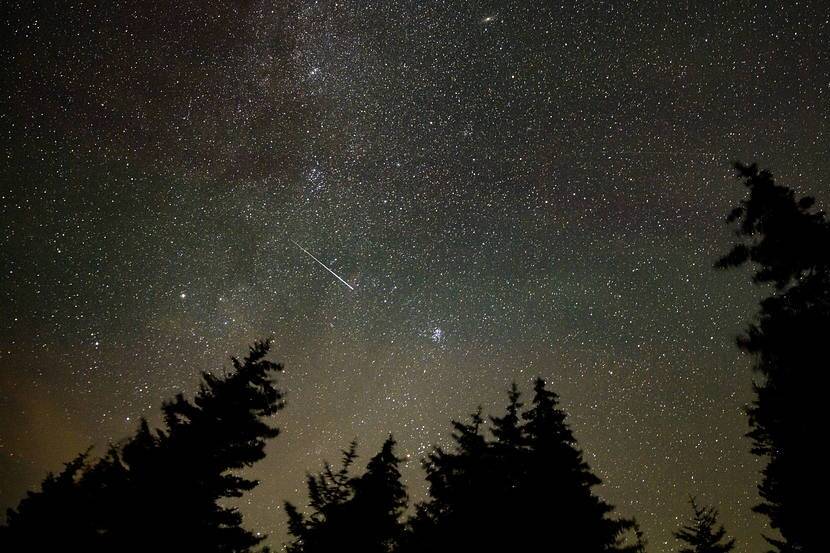A dark sky full of stars stretches to the horizon, the scent of baked grass and pine fills the air, and dozens of pinpricks of light flash across the summer sky.
Throughout each year, there are many stargazing opportunities in the Pacific Northwest — including three meteor showers during August.
One of the most popular celestial events is the Perseid meteor shower, which takes place this year between July 14 through Sept. 1, peaking Aug. 13.
The peak of a meteor shower is the projected time when the most meteors can be seen.
At the Battle Point Astronomical Association (BPAA), the Perseids can be viewed at their monthly stargazing party on Aug. 13 at the Edwin E. Ritchie Observatory on Bainbridge Island.
The stargazing party will begin with a presentation about the meteor shower, presented by BPAA President Frank Petrie and BPAA Chief Astronomer Cole Rees.
The star party takes place on one of the projected peak days of the Perseid shower, but there may not be many meteors visible because of the nearly full super moon on the night of the event.
“Even though it’s the peak [on Aug. 13], we’re not going to see a lot of meteors because of the moonlight. So you might actually have a better chance of seeing meteors before the full moon or after the full moon,” said Petrie.
He said there will still be sights to see at the star party, specifically some famous planets and star clusters.
“If people want to stay out late, they will be treated to some nice views of Saturn and Jupiter, even though the moon will be full,” said Petrie. “There are star clusters that we can look at — the Great Cluster in Hercules [constellation] is a summertime favorite … There’s always stuff up in the sky that we can look at.”
Saturn rises around 10 p.m., and Jupiter follows at about 11:30 p.m.
Aside from the Perseids, there are two other meteor showers in the coming weeks. The Alpha-Capricornids, Delta Aquariids, and Perseids are observable until Aug. 15, Aug. 21, and Sept. 1, respectively.
These meteor showers get their names from the constellations they appear to originate from, otherwise known as their radiants: Capricorn, Aquarius and Perseus.
“If somebody were to go out any time in this next week, before the full moon starts to interfere, if you go out after midnight and just look up, you’re likely to see meteors from any of these three showers flying across the sky,” said Petrie.
One of the most important things to consider when planning a stargazing trip is to find a location with minimal light pollution, according to the NASA website.
A few good locations in Washington state to observe meteor showers are Sunrise Park at Mount Rainier, Olympic National Park and Hurricane Ridge on the Olympic Peninsula, and Mt. Constitution on Orcas Island, according to the BPAA website and earthsky.org, an astronomy website recommended by the BPAA.
BPAA is a nonprofit organization founded in 1992 that constructed and put to use the Ritchie Observatory, which was completed in 1997 on Bainbridge Island. The observatory houses the 27-inch Ritchie Telescope, a planetarium, workshop, library, and meeting room.
The observatory enables the public to take in the infinite sights of space through the Ritchie Telescope, the largest telescope accessible to the public in the Pacific Northwest.
BPAA is raising money to purchase a new planetarium projector so they can continue to give shows when the sky is too cloudy to use the telescope in real-time.
To find out more about the Perseids meteor shower and BPAA’s stargazing events or to make a donation, visit bpastro.org.


